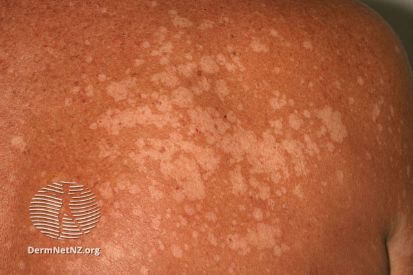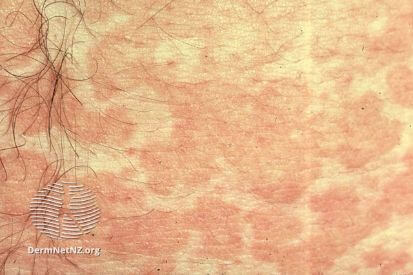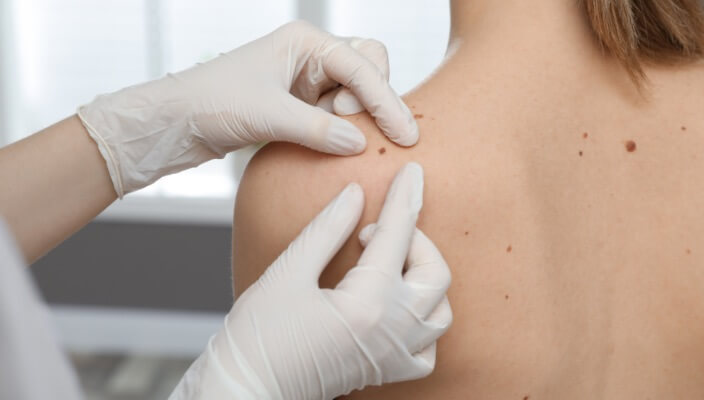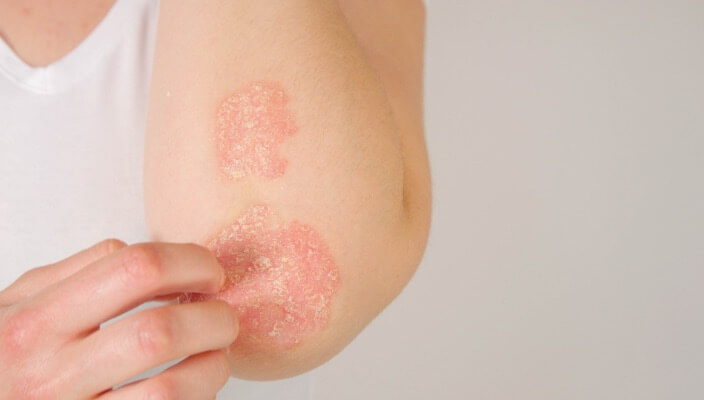Tinea Versicolor
The dermatologists at Cumberland Skin treat Tinea Versicolor with specialized creams, shampoos, or pills that kill the fungus. They might recommend a stronger medication if the infection is severe. Scheduling your skin consultation can help you and your dermatologist determine the best course of treatment for your diagnosis.
Following your dermatologist's advice for the best results will lead you to accomplishing your healthy skin goals.
Examples of Tinea Versicolor



What are the Symptoms of Tinea Versicolor?
- Patches may be pink, tan, or brown.
- Can merge to form larger areas.
- Tinea versicolor is more noticeable after sun exposure because the fungus inhibits the normal tanning response.
What Causes Tinea Versicolor?
- Tinea versicolor is caused by an overgrowth of the yeast-like fungus (Malassezia) on the skin.
- The fungus disrupts normal pigmentation, leading to the development of discolored patches on the skin.
- Factors like heat, humidity, and oily skin can contribute to the overgrowth of Malassezia.
Tips on How to Prevent Tinea Versicolor
Tips for preventing tinea versicolor that you can try while you wait to see a dermatologist include:
- Avoid excessive heat and humidity whenever possible.
- Keep sun exposure to a minimum, and avoid other elements that can darken your skin such as tanning beds, as this can enhance discoloration.
- Wear clothing that is loose, breathable, or made of wicking materials.
- Avoid skin products that are oily, ideally choosing oil-free or non-comedogenic options.
- Use anti-fungal shampoos and creams. When using creams, apply to clean and dry skin according to package instructions.
Tinea Versicolor FAQs
Dermatologists often diagnose Tinea Versicolor by examining the affected skin and may use a Wood's lamp for better visibility. If you notice persistent discoloration or changes in your skin, consult a dermatologist.
Recurrence is possible, especially in warm and humid environments. Dermatologists may recommend antifungal shampoos or other preventive measures to minimize the risk of recurrence.
Yes, Tinea Versicolor can affect facial skin. Dermatologists may recommend specialized treatments for the face, such as antifungal creams or washes designed for sensitive areas.
Sun exposure can worsen Tinea Versicolor. Dermatologists often advise avoiding prolonged sun exposure and may recommend specific sunscreens or protective measures to prevent exacerbation.
Treatment Options for Tinea Versicolor
If tinea versicolor is diagnosed, dermatologists may prescribe oral antifungal medications. It's essential to follow the prescribed treatment regimen consistently to ensure effective resolution of the infection. To create your personalized tinea versicolor maintenance plan, schedule a consultation with Pinnacle Dermatology.
Related Blog Posts

- General Dermatology
- Skin Exams
Preparing for your first dermatology appointment is important because it ensures everything goes as smoothly as possible and that your doctor is up-to-date on the status of your overall health and wellbeing. Here are our expert tips.
Read More
- General Dermatology
- Chronic Skin Conditions
Learn the differences between dry skin, eczema, and psoriasis, their distinct characteristics, and potential triggers. Gain valuable insights into identifying symptoms and seeking appropriate treatment to effectively managing these common skin conditions.
Read More
- Skin Care
- Cosmetic Treatments
Unlock the secrets to achieving radiant, glowing skin. Explore expert tips and skincare routines tailored to nourish and revitalize your complexion, empowering you to embrace a luminous and youthful appearance.
Read MoreFeatured Products

Colorescience Total Eye 3-in-1 Renewal Therapy SPF 35
Treat your eyes to Total Eye®3-in-1 Renewal Therapy SPF 35 to visibly improve the appearance of dark circles, puffiness, fine lines, and wrinkles while protecting the delicate eye area against photoaging with 100% SPF 35 mineral sunscreen. .23 oz / 7 mL

EltaMD Barrier Renewal Complex
EltaMD Barrier Renewal Complex is clinically proven to moisturize the stratum corneum and improve dry, compromised skin within 24 hours after a single application. This advanced formula works to visibly minimize the appearance of fine lines and wrinkles while significantly improving skin texture, tone and pore size. A selected blend of ceramides and other essential lipids helps strengthen the barrier and restore its natural hydration system. Enzymes and vitamins minimize the appearance of redness and promote skin cell turnover. Within 21 days, skin appears softer, smoother, healthier and more youthful. 1.7 oz / 47 g


